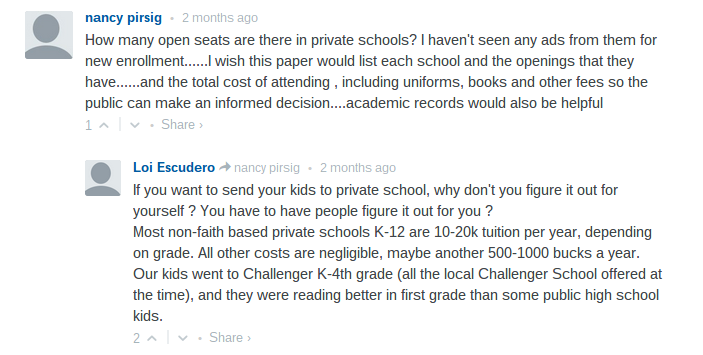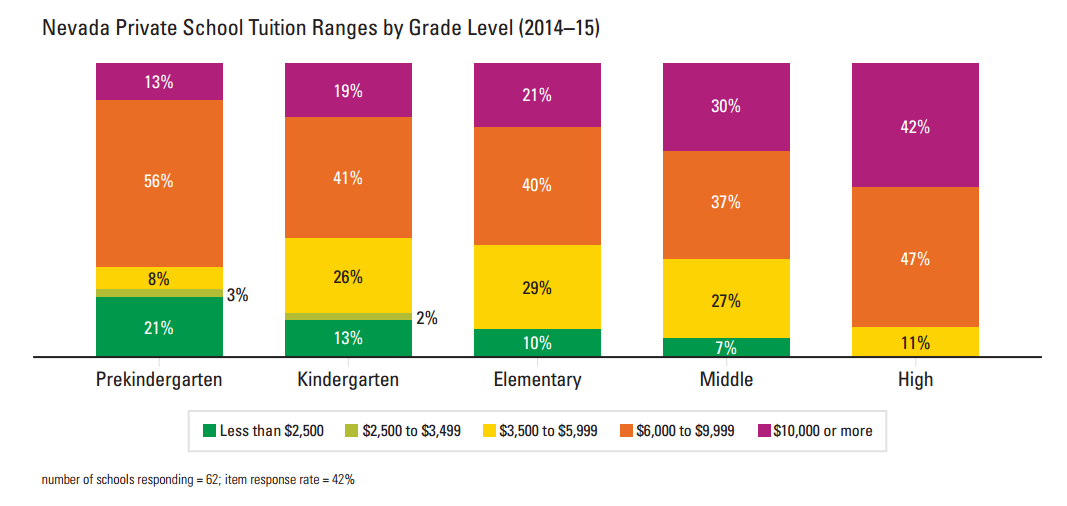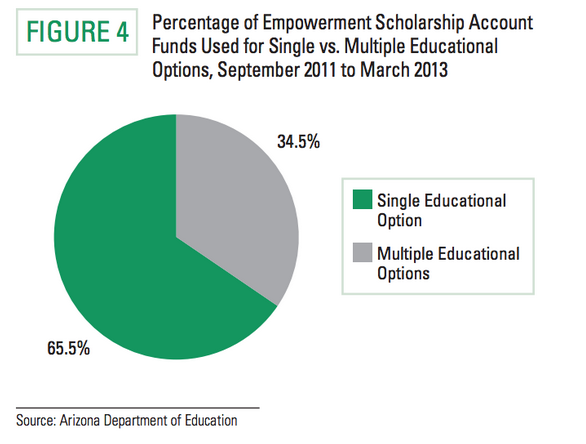Friday Freakout: Are Nevada Secular Private Schools Affordable with ESAs?
As the rollout of Nevada’s nearly-universal education savings accounts (ESAs) continues, parents have plenty of questions. We saw some great ones in response to this July article detailing the ESA’s early application period.
One conversation between commenters caught our attention:

Last month, we released a new report—Exploring Nevada’s Private Education Sector.
Today’s freakout answers many of nancy pirsig’s questions with on-the-ground data and explores Loi Escudero’s claim about the cost of secular private schools.
How many seats are open?
According to our survey of Nevada private schools, many will open new seats in response to the ESA and tax-credit scholarship programs. We estimate there will be about 6,600 open seats across all private schools and all grade levels.
Our data show the majority of open private school seats will be concentrated in larger cities—Las Vegas, Henderson, and Reno—but that seats will be open throughout the state.
Nevada Cities Having Open Seats in Respondent Private Schools (2014--15)
number of schools responding = 63; item response rate = 43%
Nevada Counties Having Open Seats in Respondent Private Schools (2014--2015)
number of schools responding = 63; item response rate = 43%
Anecdotal evidence from other states that have implemented expansive school choice programs shows the private school marketplace will adjust to meet new demands. In some states, like Arizona, parents have even created private schools to meet the needs of their students. With programs like these, all sorts of innovations are possible.
What’s the cost of attending?
Of course, many like nancy pirsig are concerned about more than just open seats. They are also concerned that Nevada’s $5,100 to $5,700 ESA won’t be enough to cover tuition at a private school.
In response to nancy’s questions, Loi Escudero brought up another common concern: that parents who use the ESA will be limited to choosing religious schools over the more expensive secular options.
Loi Escudero spoke from personal experience with one secular private school in Nevada. It’s true that fees for things like registration, technology, and textbooks average around $500 per school year at private schools, according to our survey. And it’s true that some private schools in the state cost $10,000–$20,000 per year or even more. However, our data show that most schools do not have such high tuition costs.
In fact, half of all private schools who responded to our survey’s tuition and fees questions charge $6,450 or less for elementary, $6,375 or less for middle school, and $8,100 or less for high school. Though a few elite private schools may charge $20,000 or more, that is certainly not the case for most schools.

And how do religious schools compare to secular schools?
It’s true that religious schools tend to be more affordable, at least in Nevada. Of the religious private schools that responded to our survey’s tuition and fees questions, half charge $6,100 or less for elementary school, $6,645 or less for middle school, and $7,900 or less for high school. Among nonsectarian schools, half charge $9,100 or less for elementary school, $18,400 or less for middle school, and $18,413 or less for high school.
Clearly, Loi is right on some level. In Nevada’s pre-ESA private education market, secular private schools do tend to be much more expensive than their religious counterparts. However, that doesn’t mean that parents who don’t prefer a religious education for their children will be out of luck with an ESA. Here’s why:
1. Most private schools offer additional aid.
It’s easy to look at the average tuition and fees for Nevada private schools and write them off. If the average is at or above the amount of a fully-funded ESA, that must mean many schools will still be financially out of reach for families using an ESA, right? Not necessarily.
More than 80 percent of the respondent Nevada private schools offer tuition assistance to some families. In fact, about half of those schools offer assistance to at least 13 percent of their students. Of the students who do receive tuition assistance, half receive $1,050 or more.
Additional aid may put even secular private schools within reach for mid- to low-income families choosing to use the ESA program.
2. The ESA isn’t intended only to fund students’ education at private schools.
The beauty of the education savings account model is that it allows for complete educational flexibility. Because the funds can be used for tutors, individual classes, educational therapy, curriculum to use at home, online schooling, and more, parents are not locked into paying an average of $9,175 for a non-religious, non-public school education.
Research from Arizona’s ESA program, the first and most established ESA program in the nation, finds more than one-third of ESA families spent their ESA funds to customize an education with a variety of learning options of private school.

(Interestingly, that same study found about two-thirds of Arizona ESA parents spent their funds on private school tuition and fees, but the majority of all Arizona ESA funds were spent at non-parochial schools. We have a new study releasing next year that provides a more recent update on this same program, too.)
In the end, if Nevada ESA parents decide they don’t prefer or still can’t afford local private schools, the program gives them access to a broad variety of other educational options for their children, including curriculum, tutors, online schooling, therapists, and more.
3. Innovation and growth will happen.
Finally, one thing that’s easy to leave out of the conversation is that the data we have for private school tuition in Nevada only covers the schools that exist right now. All of those schools pre-date the ESA and tax-credit scholarship programs.
We don’t know what new innovations will blossom in Nevada’s educational marketplace. We do know that in other states, we’ve seen affordable private schools, co-ops, and out-of-the-box learning services pop up as a direct response to the demand driven by educational choice programs. Our hope is that Nevada’s new programs will follow suit by drawing new schools to the state—schools that are better suited for both the needs and the budgets of local students.
Nevada’s private school sector needs to evolve in order to meet the needs of all Nevada families who hope to opt in to the ESA program. And that won’t happen overnight. But through this program, Nevada will be the first state in the nation to have a chance of building the free, open, innovative educational market of which Milton and Rose D. Friedman dreamed.




